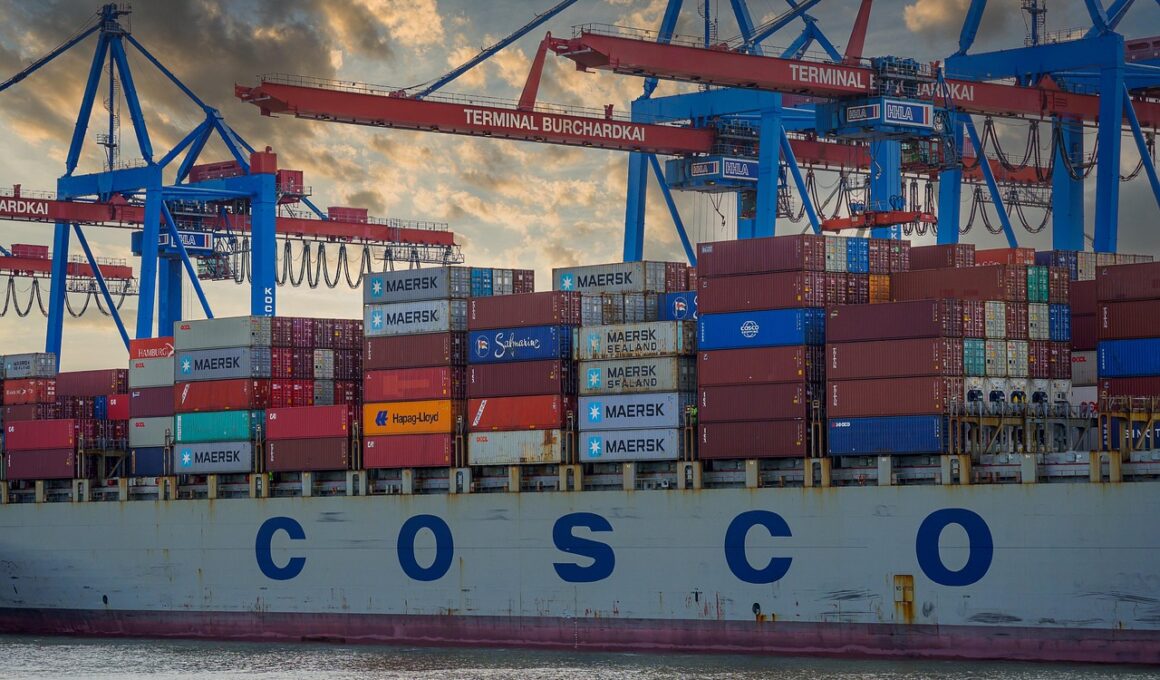Cross-border Supply Chain Finance in the Asia-Pacific Region
Cross-border supply chain finance (SCF) plays a critical role in the Asia-Pacific region by facilitating trade between nations through enhanced financial solutions. This financing approach directly affects the efficiency of the logistics network by providing quicker access to funds for businesses involved in cross-border transactions. A growing number of companies are leveraging SCF programs to improve cash flow and reduce the financial risks associated with international trading. As trade barriers continue to diminish, the importance of seamless cross-border payments and financing becomes increasingly evident. Participants in cross-border SCF often include small and medium enterprises (SMEs), large corporations, and financial institutions. These stakeholders collaborate to optimize the supply chain, ensuring the timely delivery of products and services across various geographies. Moreover, stakeholders must navigate complex regulatory environments, currency fluctuations, and documentation requirements. By incorporating digital tools, SCF solutions can streamline processes and foster transparency among global partners. Well-executed SCF programs can greatly improve working capital for businesses while minimizing risks, hence stimulating economic growth across the Asia-Pacific region.
Key Challenges Faced
Despite the advantages, implementing cross-border SCF in the Asia-Pacific region presents several challenges. The most pressing issues are often regulatory compliance and the varying legal frameworks across different countries. As organizations engage in cross-border transactions, navigating diverse regulations becomes critical to avoid legal pitfalls and financial penalties. Additionally, different countries may have different supply chain customs and practices, which can add to complexity. The differences in local banking systems also pose challenges, complicating transaction processing and affecting payment timelines. These variations can lead to unforeseen delays, increased costs, and inaccurate forecasting for businesses. Furthermore, issues such as documentation and verification requirements hinder efficiency and create friction in the supply chain process. Another significant hurdle is the need for trust and transparency among all parties involved in the transactions. The absence of robust digital infrastructure in some countries can exacerbate these challenges and limit access to essential financial services. Bridging these gaps necessitates collaboration between businesses, financial institutions, and government entities to foster an environment conducive to cross-border SCF growth.
Advantages of Cross-border SCF
Cross-border supply chain finance has numerous advantages for businesses engaged in international trade within the Asia-Pacific regions. One major benefit is enhanced liquidity, allowing companies to access funds quickly and efficiently as they engage in global transactions. This quicker access to capital helps businesses navigate fluctuating demand while ensuring they have the necessary resources to meet their obligations. Additionally, cross-border SCF reduces financial risk associated with trade, especially in volatile markets. As these finance solutions help social enterprises and SMEs participate, they often gain improved credibility with clients and suppliers alike. Moreover, reduced reliance on traditional financing options decreases the cost of capital, allowing companies to invest more in growth opportunities. Streamlined processes enabled by technology further improve efficiency and transparency throughout the supply chain, fostering stronger relationships between buyers and suppliers. The focus on innovative financing solutions stimulates competition and drives economic growth in the region. Moreover, well-designed SCF programs can lead to improved supply chain visibility, ensuring that companies have the necessary information to make informed decisions in real time.
Integrating technology is essential for enhancing cross-border supply chain finance practices. Digitalization allows for the automation of processes, reducing human error and optimizing transaction times significantly. By leveraging advanced technologies such as blockchain and artificial intelligence, businesses can enhance transparency in cross-border transactions. Blockchain technology can be instrumental in establishing a tamper-proof system for records management, which ensures that all parties have access to the same data and validates transactions without an intermediary. AI can also provide predictive analytics, empowering organizations to make better credit assessments and risk evaluations. Furthermore, mobile platforms can help facilitate on-the-go financing, ensuring that companies can manage their finances effectively, regardless of geographical boundaries. Digital financing solutions can also offer improved access to funds for smaller businesses that traditionally struggle with financing options. By integrating robust technologies into cross-border SCF, stakeholders can create more resilient and agile supply chains. Additionally, investments in cybersecurity and data protection will enhance trust among all parties involved, further driving the adoption of cross-border SCF practices within the Asia-Pacific region.
Another key aspect of cross-border SCF is the role of partnership networks in fostering efficient supply chain solutions. Businesses that collaborate with established financial institutions tend to experience greater success when accessing financing options. These types of partnerships can bring about coordinated efforts that align the goals of different stakeholders, creating a synergy that yields better results in cross-border trade. Financial institutions not only provide funds but also valuable insights into managing risk and navigating regulatory complexities. Additionally, such partnerships enable SMEs to build their reputation internationally, positioning them as credible partners in trade. Networks of suppliers, buyers, and financial institutions can create innovative financing instruments tailored to varying needs, enriching access to capital for all parties involved. The combination of cooperation and technology in these networks allows for dynamic financial arrangements, offering better payment terms and reducing working capital burdens for businesses. As these networks grow, they bolster the positive impact of cross-border trade, contributing to economic prosperity across the Asia-Pacific region, leading to a win-win situation for everyone involved.
To advance cross-border supply chain finance in the Asia-Pacific region, it is essential for stakeholders to promote education and awareness regarding SCF best practices. Educational initiatives can empower businesses with the knowledge of available financing options, financial literacy, and risk management strategies. Workshops, webinars, and online courses can provide valuable resources and information tailored to specific industries and business sizes. Such initiatives can help demystify the complexities surrounding cross-border SCF and encourage its adoption among SMEs and emerging market players. Additionally, fostering collaboration between private and public sectors can enhance the regulatory frameworks governing cross-border financing. By encouraging share best practices, stakeholders can develop a comprehensive understanding of the evolving financial landscape. This effort can help create a sustainable ecosystem supporting international trade by aligning goals with compliance requirements. When businesses are informed about their options, they are better positioned to seize growth opportunities in global markets. Ultimately, the promoted education can lead to a more competitive environment, as organizations leverage SCF to optimize working capital and maintain higher operational efficiency.
Finally, the future of cross-border supply chain finance in the Asia-Pacific region appears promising, provided stakeholders remain adaptable and responsive to changing market dynamics. As businesses continue to grow through international expansion, financing solutions must evolve to meet their unique needs. The ongoing advancements in technology and digital finance will enable organizations to minimize risks while improving efficiency in trade transactions. The increased emphasis on sustainability and ethical finance may bring about new opportunities for innovative financing solutions focused on responsible practices. Presence of fintech companies equips the market with disruptive solutions that can streamline transactions and reduce conventional banking costs. This shift is likely to trigger a greater focus on business model innovation, enabling companies to thrive in challenging economic environments. Furthermore, combating climate change through sustainable supply chain practices can align with the region’s economic objectives. As key players work together to address industry challenges and capitalize on emerging trends, cross-border SCF will play an increasingly integral role in economic development, benefiting businesses across the expansive Asia-Pacific landscape.


